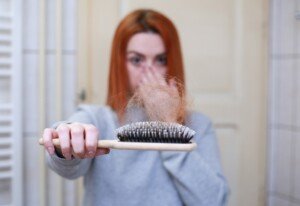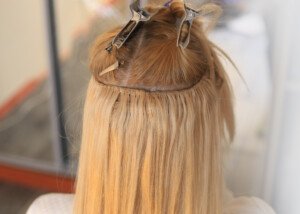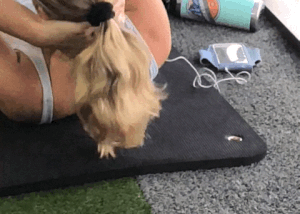
It’s no myth: Clip-in extensions and braids can damage hair and cause it to fall out: hair loss, and the damage could be permanent.
One: to add volume to hair
Two: to add length
Three: to add color, either as an under-layer or throughout.
Hair extensions actually come in a blazing array of neon colors, like blue, violet, magenta, purple, green, orange/red and pink.
Hair Loss from Clip-in Extensions
“Clip-in hair extensions can cause a variety of problems; the most important one to remember is that of hair loss from tension and pulling,” says Dr. Joel Schlessinger, MD, board certified dermatologist and cosmetic surgeon with a private practice in Omaha, NE.
“Hair is very fragile in general, and even an extension can cause it to degrade from chemicals and glues that are applied,” says Dr. Schlessinger.
“This is especially true in the case of thinning hair and with repeated application and reapplication of extensions.”
Braids Can Cause Hair Loss — if Worn Tight
“Traction alopecia [hair loss from traction] is often noted when hair is braided tightly (sometimes in order to prepare hair for extensions),” says Dr. Schlessinger. “Alopecia” means hair loss.
“Clearly, there is no benefit from braiding hair tightly; it is a very significant cause of hair loss in my practice, so it is best to avoid if at all possible.”
If you want to volumize your hair by wearing braids overnight, first put the sections that you want to braid in a loose ponytail.
What this means is, the rubber band is loose, and the rubber band is NOT right against the scalp: So what you then have is a floppy ponytail.
Then you braid below the rubber band. This way, there will be virtually no traction between the rubber band and the scalp.
If you feel the braid “snagging” or “pulling” while you’re lying in bed, gently bobby-pin the tip of the braid to the top of your head to relieve the pulling sensation.
It’s not news that any woman wants to hear, but over time, those fabulous clip-in extensions that you love so much will cause some degree of hair loss.
Just how much of your hair will fall out — beyond what’s normal in a typical day — depends on variables such as how hard you brush, how often you wear the extensions per week, for how long the clip-ins are in your hair in a given day, and how tightly you have the track’s teeth embedded into your scalp.
Braids are so cool, and tight braids are common with certain hairstyles…but unfortunately, they will stress the hair root as well.
So to prevent as much of your hair as possible from falling out, limit your use of clip-in extensions and tight braiding.

 Dr. Schlessinger, founder of LovelySkin.com, has 25+ years of experience treating many skin conditions including melanoma. He’s founder of the Advanced Skin Research Center, a clinical facility that investigates new medications and treatments.
Dr. Schlessinger, founder of LovelySkin.com, has 25+ years of experience treating many skin conditions including melanoma. He’s founder of the Advanced Skin Research Center, a clinical facility that investigates new medications and treatments.
























